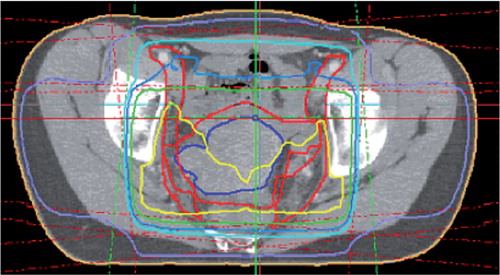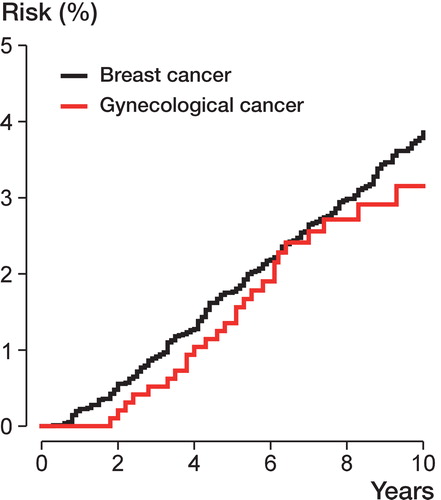Figures & data
Table 1. Patient numbers and numbers of total hip replacements (THRs) by year of therapy
Figure 1. Dose distribution from radiotherapy of a cervical cancer patient. The yellow, light blue, and purple lines represent the 50-Gy, 45-Gy, and 25-Gy isodoses, repectively. The 4 radiation fields applied in patients with cervical cancer encompass the whole pelvis, the distal border of the fields being 0–10 mm below the obturator foramen. Depending on the radiotherapy technique used, the acetabula receive 30–50 Gy while the lateral parts of the hip are irradiated with 10–30 Gy.

Table 2. Numbers of cancer patients and of cancer patients who received a total hip replacement (THR), and risk estimates from a Cox model and a Fine and Gray model

